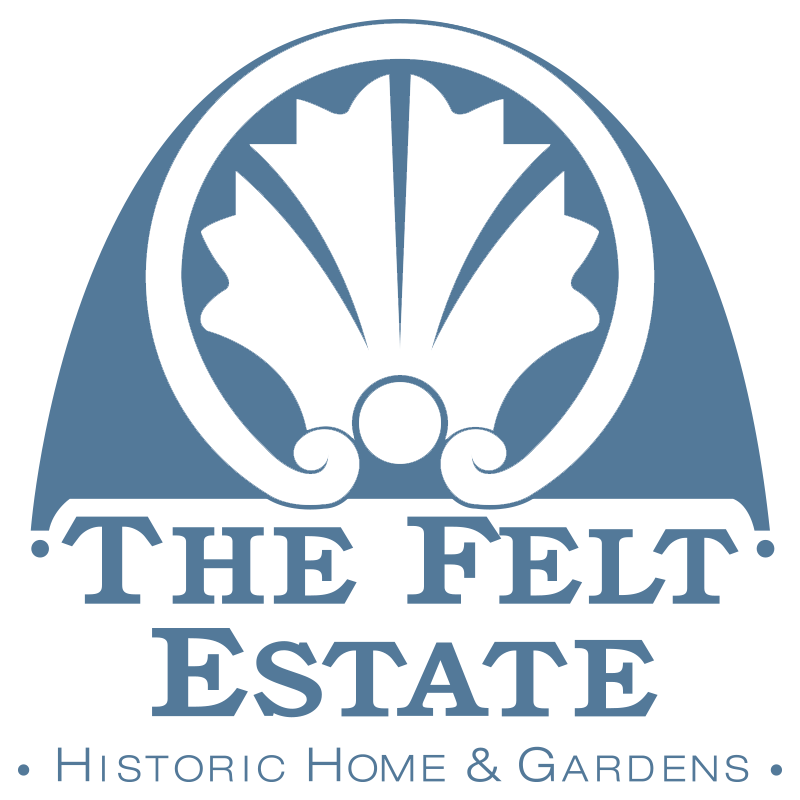The Greenest Building is the one already built
Energy Efficiency at The Felt Estate
A true challenge in restoring any historic structure is implementing energy initiatives and doing so while protecting and retaining the historic integrity of the building. This was true in spades in restoring the Felt Estate. Built like a commercial building, with concrete walls, floors, and 3-inch-thick plaster walls, the Felt Mansion presented unique obstacles and opportunities.
The Greenest Building is the One Already Built
– Carl Elefante, former president of the American Institute of Architects
We implemented many green techniques during our restoration of the Felt – so many, in fact, that we achieved LEED-EB Gold Certification. LEED-EB (Leadership in Energy and Environmental Design for Existing Buildings) was in its infancy, changing course and changing rules often, as we worked toward certification. Achieving Gold status was akin to hitting a moving target from a moving platform. In other words, not for the faint of heart.
But we did it. Here are just a few of the hundreds of green initiatives (both structural and behavioral) we undertook at the Felt between 2010 and 2012:
Probably the biggest change was a new HVAC system. We decommissioned our energy-sucking gas boiler and radiators and installed a high-efficiency, state-of-the-art, air-to-air heat pump system with mini-split units in each room. This allowed us to heat or cool only those areas in use, instead of heating the entire building. Cooling was not an option with the boiler system. As a result of this new system, not only did we save energy, but we also made a much more comfortable, climate-controlled environment for our guests.
Next, we increased our insulation. Although Dorr Felt helped us a great deal already by building a structure with 16-inch-thick exterior walls and a concrete roof topped with slate, we still added insulation above the barrel-vault ceiling in the ballroom and in the attic areas. Immediately, we noticed a decrease in heat loss.
Then, we grabbed all the low-hanging fruit – the easy fixes and behavior changes that add up to big savings over time. We replaced incandescent light bulbs with LED’s. We replaced water-guzzling old toilets and faucets with new, low-flow ones. We placed all LED holiday lights on timers, so they were not on from 1:00 a.m. to 5:00 p.m. when it was not necessary. We also changed our human behaviors: we used fewer paper products, recycled glass, metal, and paper, and worked from home when possible. We allowed more area to “grow naturally” rather than having all the estate manicured, fertilized, watered. and mowed. Yet we did this without sacrificing beauty or going against Dorr Felt’s original plans for the estate.
One thing we did not do – and this surprises many people. We did not replace our original wood windows. Two main reasons for this decision:
1. Replacing original windows always significantly impacts the exterior look of a historic structure. The State Historic Preservation Office probably would not have approved replacing them unless they were missing altogether.
2. There was nothing wrong with our wood windows that some tightening, caulking, weather-stripping, and custom wood storm windows could not fix.Finally, we added a 110kw solar array. We did this last not because we wanted to, but because this step involved several grants and a great partnership between Friends of the Felt Estate and Laketown Township. One hundred percent of the energy produced by the array goes directly to the grid, purchased by Consumers Power. In return, we are paid for that energy – and thanks to an EARP grant – we are compensated at a rate higher than the current market rate per kilowatt. In good years, years with abundant sunshine, we produce enough energy to cover the cost of our energy consumption at the Felt.
Groom in front of The Felt Estate solar array. Photo Credit: Kylee Paige Photography
So, Carl Elefante was right, “the greenest building is the one already built,” but adding energy efficient materials, techniques, and behaviors makes it even greener.
For more information about The Felt Estate’s sustainability efforts click here.
Written By: Patty Meyer, Director of Friends of the Felt Estate. Patty has been the Director of Friends of the Felt Estate since its inception in 2001. As the director she started and led the community restoration project of the estate and oversees the ongoing preservation of the estate.


